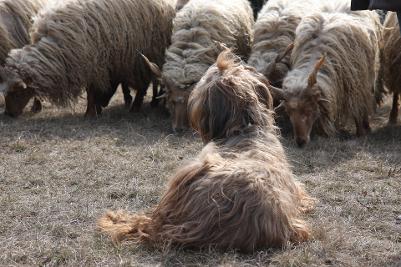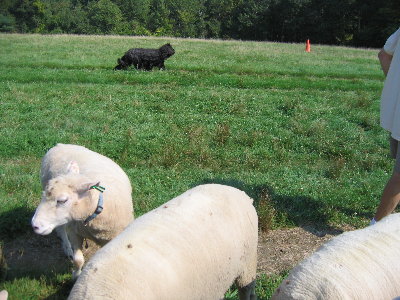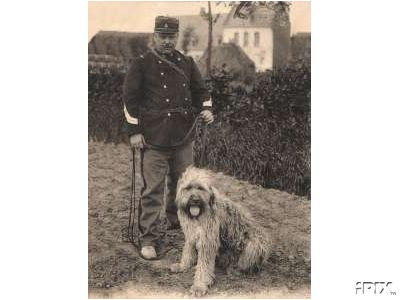Such interesting quotes as the following the Briard of Old:
"The shepherd dog should be big as his Master, strong and robust, for his duties are running and he is expected to watch for the wolves, pursue them and take away their prey." The Briard appears in art and literature throughout history. J.F. Millet, a famous painter of the 19th Century, featured Briards in several of his works. During World War I, Briards were used on the front lines as messengers, search and rescue dogs, sentries and draft animals. Briards were selected to be working, herding and guarding dogs because of their intelligence and trainability. Consequently there must be a commitment to careful nurturing from puppy hood on the part of the Master.
The original breed looked considerably different from what is seen today. Today's Briard has a much more profuse coat which would be unrealistic to a sheep farmer. Even today's Briards with the correct goat like texture often have a much longer coat tun one sees in early portraits of the breed.
The Briard is not "self-socialized". Socialization must be accomplished by frequent exposure to sights, sounds and most importantly people during the initial year of life. Many Briards go through a period of shyness. This usually occurs between six and eighteen months of age. Many people believe that this may be due to the veil over the eyes impairing their vision. It is untrue that a coated dog can see through his hair and that removing the hair can hurt his eyes.
Briards require regular grooming, both bathing and brushing to insure healthy skin and a lustrous coat. The standard of the breed requires double dewclaws on each rear foot. The dog should be strong and robust with a level top line.
You will enjoy your Briard - herding your children, interacting with your other animals and his first Bark! They are silly, funny, loyal and extremely affectionate and always alert.
* "And so the Briard created by modern zoology, but rather it is the natural descendent of Man's first helper, the dog of pre-history. He has evolved through the centuries by natural selection for the qualities needed for his work."
* From the Briard By Diane McCleroth, 1982


